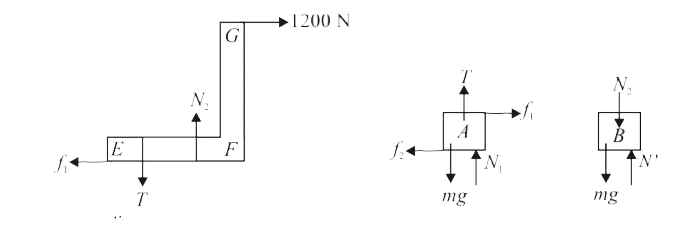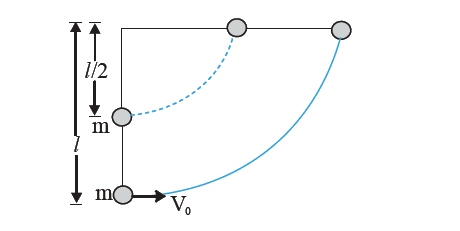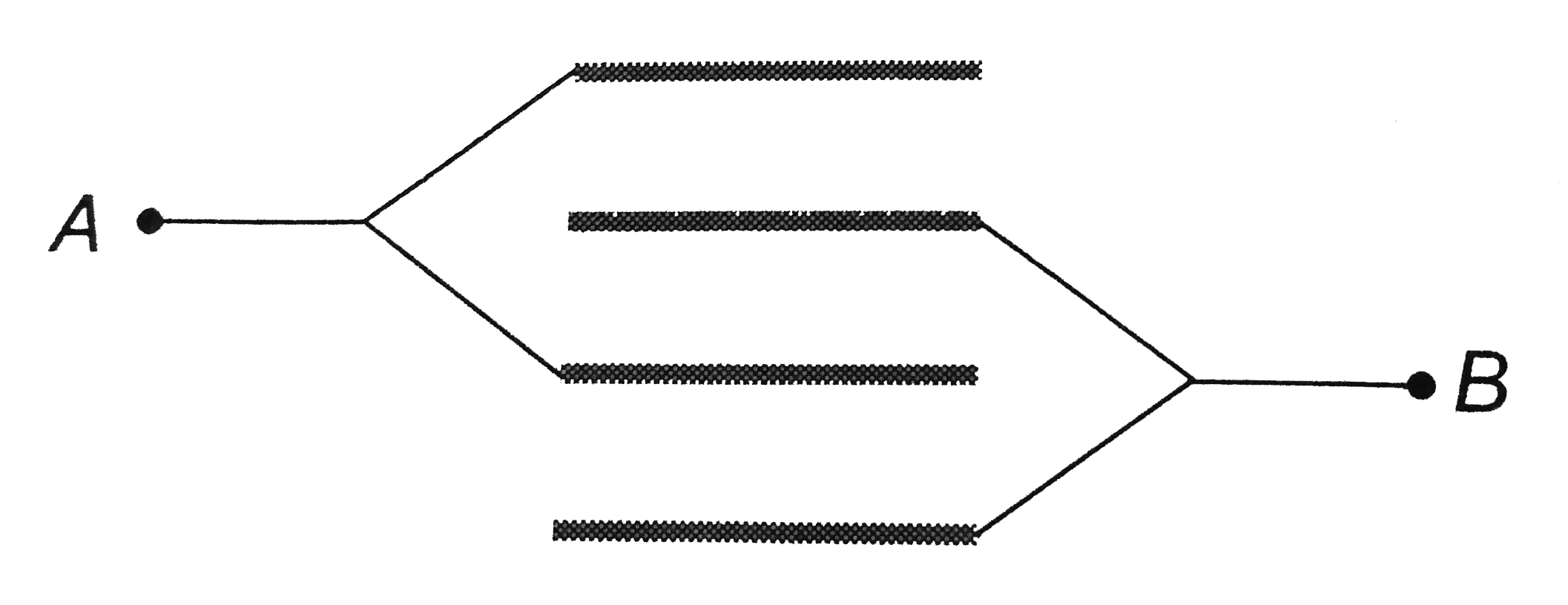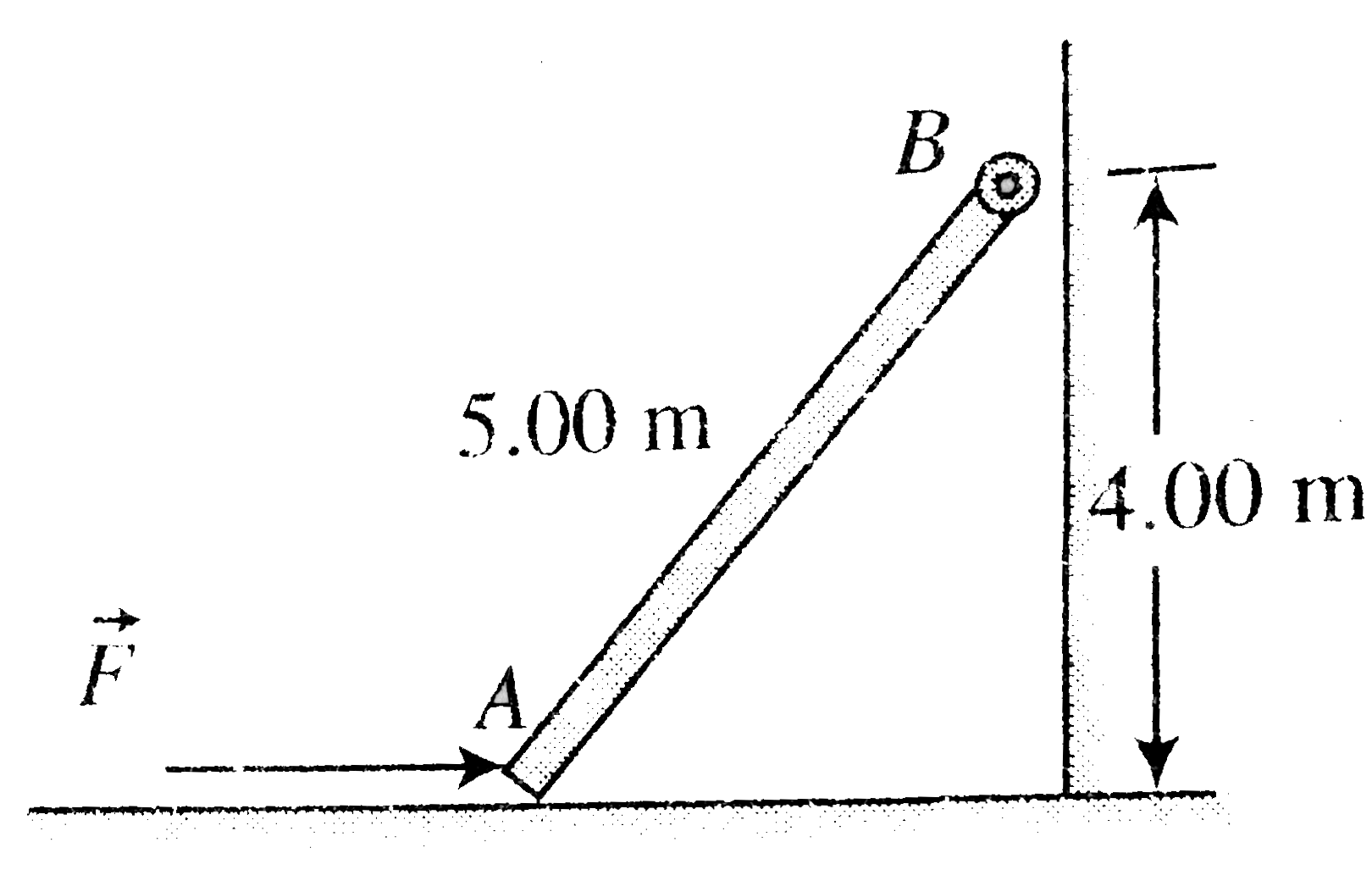In the figure shown, A and B are two short steel rods each of cross-sectional area 5cm2. The lower ends of A and B are welded to a fixed plate CD. The upper end of A is welded to the L-shaped piece EFG, which can slide without friction on upper end of B. A horizontal pull of 1200N is exerted at G as shown. Neglect the weight of EFG.

Mark out the correct statement(s).
Shearing stress in A is zero
Shearing stress in B is zero
Shearing stress in both A and B is zero
Shearing stress in both A and B is non-zero
The correct Answer is:B
A will be applying pulling force to make EFG in equilibrium.

For vertical equilibrium of EFG, T=N2
As A is in equilibrium f1=f2=f (suppose)
For horizontal equilibrium of EFG, f1=1200N
For rotational equilibrium , τA=0⇒N2×4−1200×3=0⇒N2=900N
Shearing stress in A=FA=12005=240N/cm2
Shearing stress in B = 0
Longitudinal stress in A=TA=180N/cm2
Longitudinal stress in B=N2A=180N/cm2 & it will be compressive in nature
Similar Questions
In the figure shown density of lower liquid is three times of density of upper liquid. The cross- sectional areas of openings shown are same. The ratio of mass flow rate from upper opening to lower opening at initial moment is:
View SolutionA light rod of length l is pivoted at the upper end. Two masses (each m), are attached to the rod, one at the middle and the other at the free end. What horizontal velocity must be imparted to the lower end mass, so that the rod may just take up the horizontal position ?

View Solution
Knowledge Check
In the figure shown, A and B are two short steel rods each of cross-sectional area 5cm2. The lower ends of A and B are welded to a fixed plate CD. The upper end of A is welded to the L-shaped piece EFG, which can slide without friction on upper end of B. A horizontal pull of 1200N is exerted at G as shown. Neglect the weight of EFG.

Longitudinal stress in B isAtensile in nature and having magnitude 180N/cm2Btensile in nature and having magnitude 240N/cm2Ccompressive in nature and having magnitude 180N/cm2Dcompressive in nature and having magnitude 240N/cm2In the figure shown, A and B are two short steel rods each of cross-sectional area 5cm2. The lower ends of A and B are welded to a fixed plate CD. The upper end of A is welded to the L-shaped piece EFG, which can slide without friction on upper end of B. A horizontal pull of 1200N is exerted at G as shown. Neglect the weight of EFG.

Longitudinal stress in A isAtensile in nature and having magnitude 180N/m2Btensile in nature and having magnitude 240N/m2Ccompressive in nature and having magnitude 180N/m2Dcompressive in nature and having magnitude 240N/m2Four plates of the same area of cross-section are joined as shown in the figure. The distance each plate is d. The equivalent capacity across A and B will be
 A2ε0AdB3ε0AdC3ε0A2dDε0Ad
A2ε0AdB3ε0AdC3ε0A2dDε0Ad
A body of mass M is attached to the lower end of a metal wire, whose upper end is fixed . The elongation of the wire is l.
View SolutionIn the figure shown, forces of equal magnitude are applied to the two ends of a uniform rod. Consider A as the cross-sectional area of the rod. For this situation, mark out the incorrect statements.

View SolutionEnd A of the bar AB in figure rests on a frictionless horizontal surface and end B is hinged. A horizontal force →F of magnitude 120N is exerted on end A. You can ignore the weight of the bar. What is the net force exerted by the bar on the hinge at B?

View SolutionA light rod of length l is pivoted at the upper end. Two masses (each m), are attached to the rod, one at the middle and the other at the free end. What horizontal velocity must be imparted to the lower end mass, so that the rod may just take up the horizontal position?

View SolutionA thin rod of mass m and length l is hinged at the lower end to a level floor and stands vertically. Then its upper end will strike the floor with a velocity given by:
View Solution
